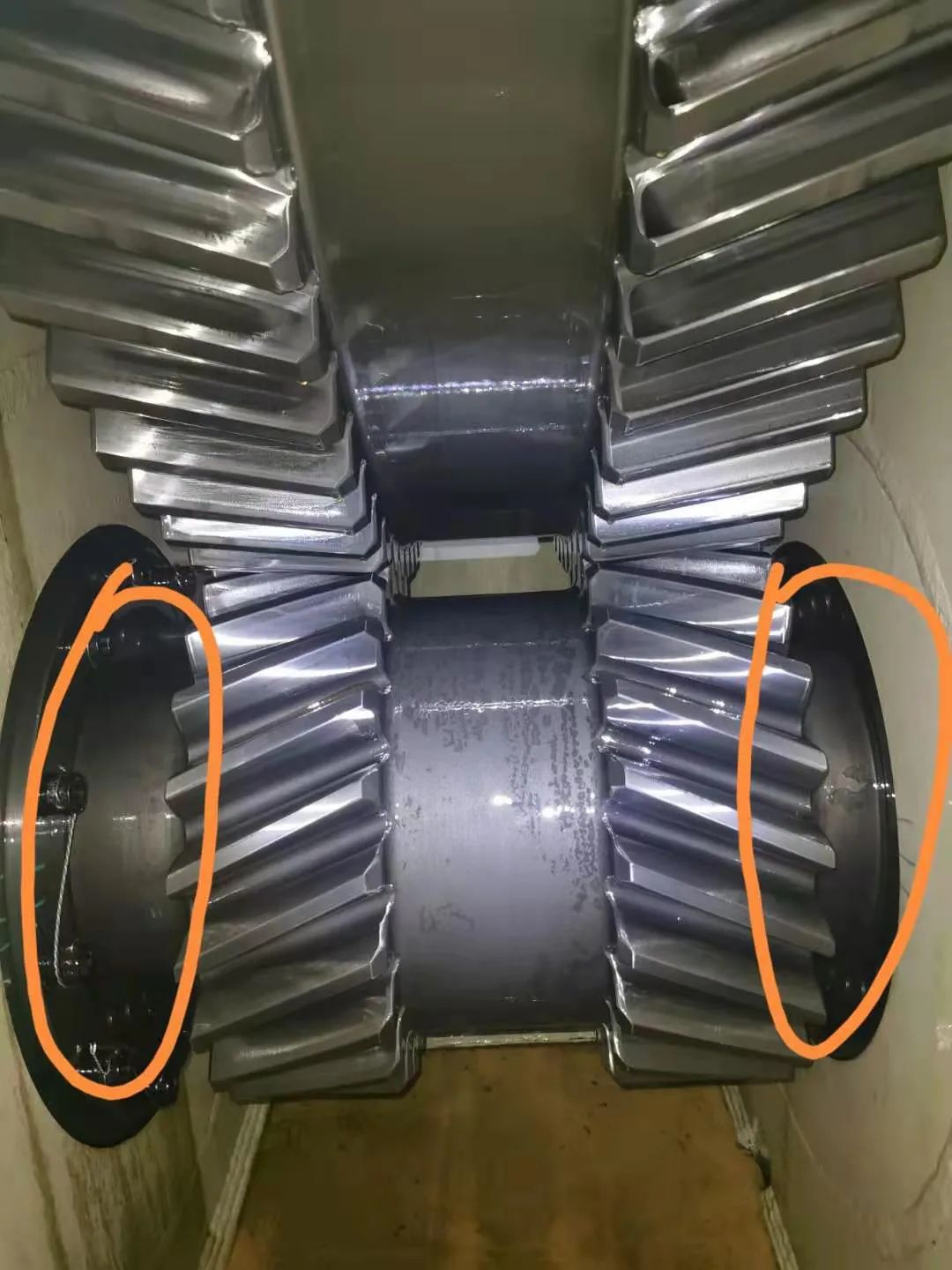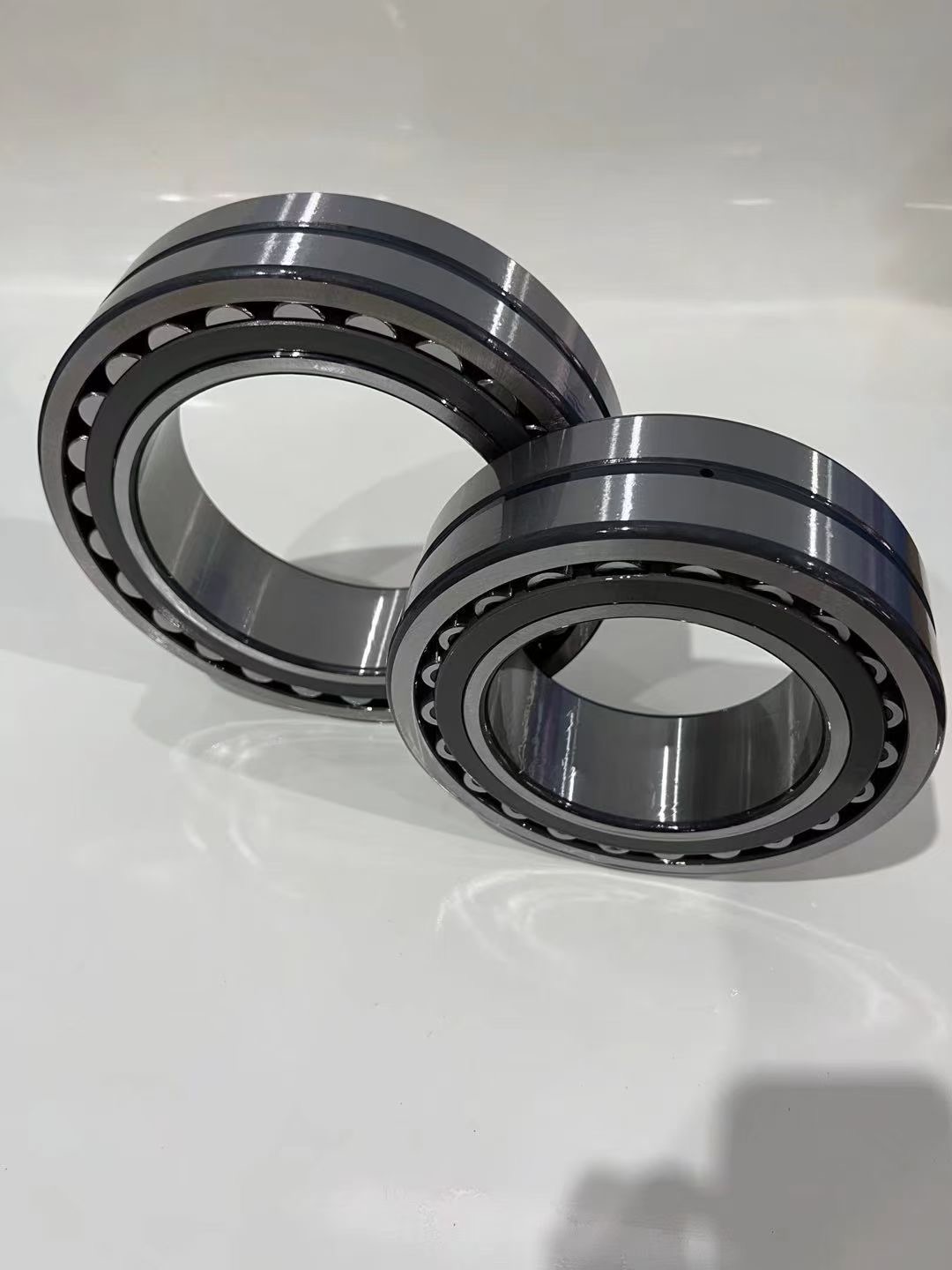Wishlist
The products are limited
The products are limited
An engineer recently reached out after reading an article in this publication about axial loads on spherical roller bearings. They'd encountered a similar situation in reality, involving a gearbox with the structure shown in the image.

The image displays two gear shafts connected via meshing gears, with the highlighted section indicating the bearing support position for one of the shafts. This particular design utilizes two spherical roller bearings. During normal gearbox operation, the engineer observed a strange phenomenon: the rollers on the inner side of the two bearings would disengage. The engineer even provided a video showing that even when the shaft transitioned from an operational to a stopped state, the inner rollers of both bearings could freely coast for a short period. Furthermore, in previous machines, according to the engineer, the bearings on this shaft frequently experienced issues. This is a very interesting case, and I'd like to share the analysis process with you.
Spherical roller bearings (excluding toroidal roller bearings) typically feature two rows of rolling elements and possess a self-aligning capability. The unique design of the roller profiles and the inner and outer ring raceways allows these bearings to accommodate misalignment and shaft deflection. Overall, spherical roller bearings can withstand significant radial loads, a certain amount of axial load, and some misalignment.
While the above describes the general load-carrying capacity of spherical roller bearings, it's important to note that their axial load capacity is limited by their internal structure.
When a spherical roller bearing experiences a unidirectional axial load, the rollers on the side opposite to the load are compressed by the inner and outer ring raceways, thereby carrying the axial load. Conversely, the rollers on the opposite side do not directly bear this external axial load. However, if the bearing also carries a radial load, due to its inherent design, these seemingly unloaded rollers are still compressed, and their pressure angle generates an axial component. Consequently, when the bearing is operating, this row of rollers, along with the other row, becomes compressed and engages in operation.
Here's where the problem arises: If the external axial load on the bearing exceeds the axial component of the force on the rollers that are not directly bearing the load, then this row of rollers will experience a "disengagement" phenomenon. When the bearing is running, this row of rollers, lacking sufficient positive pressure, cannot achieve pure rolling motion within the raceway. Instead, their movement typically becomes a mixture of sliding and rolling.
We know that a crucial factor for pure rolling motion of rolling elements within a bearing is sufficient positive pressure, which, for a bearing, translates to a minimum load.
In the spherical roller bearing load analysis discussed earlier, the "disengaged" row of rollers is precisely in a state of insufficient minimum load. When the bearing operates under such conditions, it can lead to overheating, surface fatigue, and wear due to poor rolling motion.

Based on this analysis, it's clear that the disengagement of a single row of spherical roller bearing rollers in the aforementioned gearbox system is abnormal. Even if the bearing isn't showing problems right now, operating under these conditions makes it highly susceptible to overheating, surface fatigue, and wear once it's put into service.
This analysis shows us that a single row of disengaged rollers in a spherical roller bearing is an abnormal condition. But what causes this state in the first place?
For the specific case illustrated in the diagram, we need to analyze the forces acting on the entire shaft system to identify the root cause of this problem. The analysis will begin by determining whether the observed load is an "expected outcome" for this specific structure, and then proceed to explore its rationality and underlying reasons. This fascinating part of the analysis will be covered in the next article. Stay tuned!
Please contact us at https://www.tfl-bearing.com/contact for any questions about bearings, and if you are choosing a roller bearing distributor, we would be happy to give you a quote.